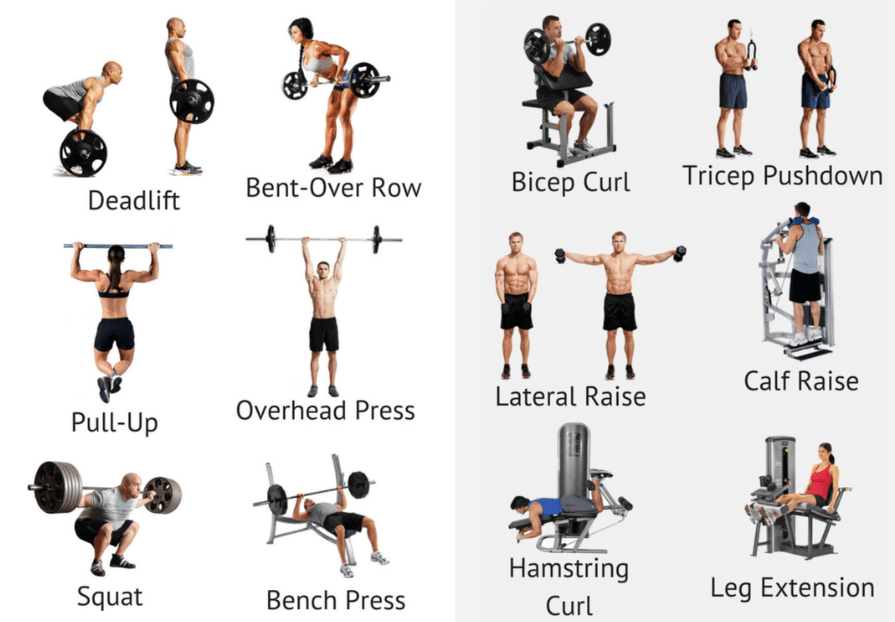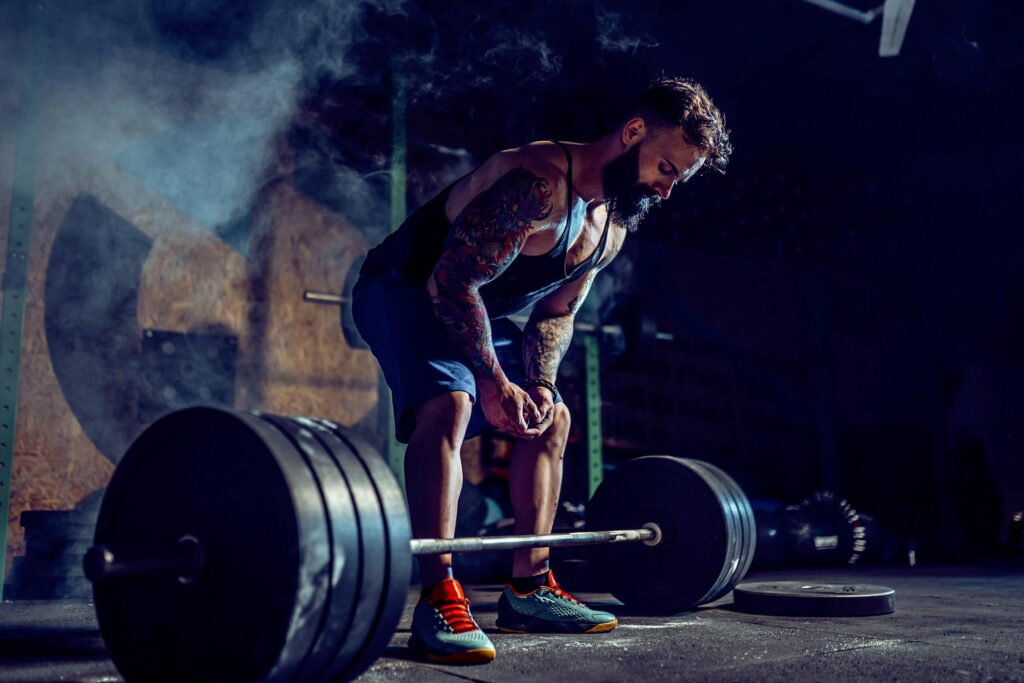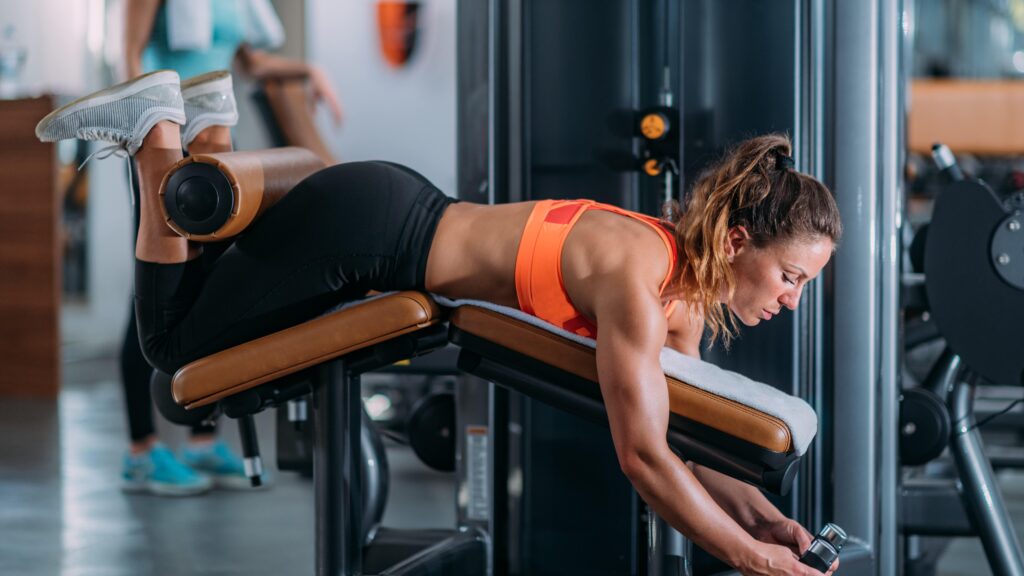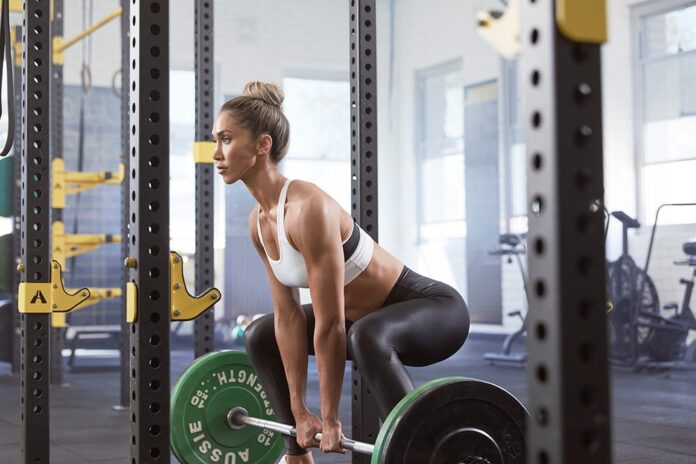Compound leg exercises are a cornerstone of any effective lower body workout routine. These multi-joint movements not only target the glutes, lower body, and hamstrings but also contribute to overall strength and muscle development. In this comprehensive guide, we’ll delve into the world of compound leg exercises, exploring their importance, benefits, and how to incorporate them into your leg training routine.
Importance of Compound Leg Exercises for Overall Lower Body Development
Compound exercises play a vital role in building strength and muscle mass. By engaging multiple muscle groups simultaneously, these exercises provide a more functional and efficient way to enhance your fitness. When it comes to leg workouts, compound movements offer unparalleled benefits for the glutes, lower body, and hamstrings. The recruitment of diverse muscle fibers results in increased muscle size and strength.
Benefits of Multi-Joint Movements for Functional Fitness
Multi-joint exercises, like compound leg movements, mimic real-life activities, making them essential for functional fitness. Performing actions that involve multiple muscle groups simultaneously improves coordination and balance, translating into better performance in daily tasks and sports activities.
Efficiency in Time and Energy Utilization during Compound Leg Workouts
One of the most significant advantages of compound leg exercises is the time and energy efficiency they provide. With just a few compound movements, you can effectively work multiple muscle groups, saving time and effort while achieving comprehensive muscle stimulation.
Compound Leg Exercises vs. Isolation Exercises

It’s essential to distinguish between compound leg exercises and isolation exercises. While compound movements involve multiple joints and muscle groups, isolation exercises target a single muscle or muscle group. Both types of exercises have their place in a well-rounded leg training routine.
How They Complement Each Other in a Well-Rounded Leg Training Routine
By blending compound and isolation exercises within your lower body workouts, you create a balanced and effective training regimen. Compound movements serve as the foundation, targeting the major muscle groups, while isolation exercises help to refine and sculpt specific muscles.
Key Muscles Worked in Compound Leg Exercises
In compound leg exercises, several key muscles come into play to execute the movements effectively. These include the glutes, quadriceps, hamstrings, calves, and other supporting muscle groups. Understanding which muscles are targeted in each exercise can help you tailor your workouts to achieve specific fitness goals.
1. Squats: The King of Compound Leg Exercises
Squats reign supreme as one of the best compound leg exercises. They target the glutes, quadriceps, and hamstrings while also engaging the core and lower back for stability and balance. Variations like front squats, goblet squats, and sumo squats add versatility to your leg training routine.
Different Variations of Squats for Glutes, Quads, and Hamstrings
To focus on specific areas of the lower body, you can customize your squat variations. For glute development, try adding a resistance band around your knees during squats. For quadriceps engagement, perform high-bar back squats, while for hamstrings, Romanian deadlifts are an excellent complement.
Proper Squat Form and Technique
Executing squats with proper form is crucial to avoid injuries and maximize results. Ensure your feet are positioned shoulder-width apart, maintain an upright chest, and ensure your knees align with your toes. Engage your core and lower back throughout the movement for stability and support.
Safety Tips and Modifications for Various Fitness Levels
Squats can be challenging for beginners, but with the right modifications and safety precautions, they can be accessible to everyone. Incorporate box squats or use a stability ball against the wall to help maintain proper form while building strength.
2. Deadlifts for Complete Lower Body Activation

Deadlifts are another powerhouse compound exercise that engages the entire lower body, especially the hamstrings, glutes, and lower back. This lift is excellent for building functional strength and developing power. There are various deadlift variations to choose from, each targeting specific muscle groups.
Focus on Hamstrings, Glutes, and Lower Back Engagement
During the deadlift, focus on hinging at the hips and keeping your back flat to effectively target the hamstrings, glutes, and lower back. Proper form is essential to prevent injuries and ensure you’re maximizing the benefits of this exercise.
Sumo, Conventional, and Romanian Deadlifts Variations
The sumo, conventional, and Romanian deadlifts offer different challenges and emphasize various muscle groups. Sumo deadlifts primarily engage the inner thighs and glutes, whereas conventional deadlifts focus on the hamstrings and lower back. Romanian deadlifts, on the other hand, put significant tension on the hamstrings throughout the range of motion.
3. Lunges for Balance and Leg Stability
Lunges are a versatile compound exercise that enhances leg strength and stability. They work multiple muscles in the legs and require balance and coordination for proper execution. Lunges come in various forms, including forward, reverse, and lateral lunges.
Various Lunge Variations and Their Specific Muscle Targets
Try incorporating walking lunges, alternating lunges, and curtsy lunges to target different muscles within the legs. Walking lunges engage the quadriceps and glutes, while alternating lunges work on balance and coordination. Curtsy lunges put more emphasis on the inner thighs and glutes.
Benefits of Lunges for Improving Leg Strength and Stability
Lunges are especially beneficial for athletes, as they replicate movements common in sports, such as running and jumping. By strengthening the legs and improving stability, lunges can enhance athletic performance and reduce the risk of injuries.
4. Leg Press: Building Quadriceps Strength
The leg press is a popular compound leg exercise that targets the quadriceps. This machine-based exercise allows you to lift heavy weights safely, promoting quadriceps strength and growth.
Explanation of the Leg Press Machine and Its Muscle Focus
When using the leg press machine, position your back against the padded backrest and employ your legs to push the weighted platform away from your body. The primary focus is on the quadriceps, though other muscles in the legs and glutes also come into play.
Proper Foot Placement and Alignment for Targeted Muscle Activation
To ensure you’re targeting the quadriceps effectively, place your feet shoulder-width apart on the platform. Adjust the seat so your knees are bent at a 90-degree angle when your feet are fully extended on the platform. Push through your heels and avoid locking your knees during the movement.
5. Step-Ups for Glute and Leg Development
Step-up exercises are an excellent way to challenge your glutes and legs while also working on balance and stability. This compound exercise requires stepping up onto a raised platform using one leg at a time.
Step-Up Exercises for Challenging Glutes and Legs
Try incorporating different step heights to vary the difficulty of this exercise. You can also add weights, such as dumbbells or kettlebells, to increase the resistance and intensity.
Utilizing Different Step Heights and Adding Weights for Progression
Begin with a lower step height for beginners attempting step-ups, and progressively raise it as you gain ease and confidence in the exercise. As you progress, add weights to challenge your glutes and leg muscles further.
6. Bulgarian Split Squats: Unilateral Leg Training
Bulgarian split squats are a fantastic compound exercise that focuses on unilateral leg training. This means you work one leg at a time, which helps identify and address any muscle imbalances.
Benefits of Bulgarian Split Squats for Balanced Leg Development
By working each leg independently, Bulgarian split squats ensure that both sides of your body are equally strong and stable. This helps reduce the risk of injuries and can improve overall athletic performance.
Targeting Quads, Glutes, and Hip Stabilizers on One Leg
When performing Bulgarian split squats, one foot is elevated behind you on a bench or platform. This position targets the quadriceps, glutes, and hip stabilizer muscles on the working leg.
7. Romanian Deadlifts: Hamstring Emphasis
Romanian deadlifts are a fantastic compound exercise specifically targeting the hamstrings. This variation focuses on the eccentric (lowering) phase of the deadlift, making it highly effective for hamstring development.
How Romanian Deadlifts Isolate the Hamstrings
During the Romanian deadlift, you keep a slight bend in your knees and hinge at the hips while maintaining a flat back. This isolates the hamstrings, making them work hard throughout the entire exercise.
Technique Tips for Optimal Hamstring Activation
To get the most out of Romanian deadlifts, avoid rounding your back and keep the movement slow and controlled. Gradually lower the weight until you sense a gentle stretch in your hamstrings, then activate your glutes and hamstrings as you return to the initial position.
8. Hip Thrusts for Glute Activation
Hip thrusts are a top glute-building exercise that targets the posterior chain. This compound movement focuses on the glutes, hamstrings, and lower back.
Hip Thrusts as a Top Glute-Building Exercise
In a hip thrust, you sit with your back against a bench and your feet flat on the floor, close to your glutes. Elevate your hips while engaging your glutes at the peak of the motion.
Adding Resistance and Variations for Glute Development
To increase the challenge and build more glute strength, you can place a weight plate or a barbell on your hips during the hip thrust. Additionally, using resistance bands around your knees can further activate the glute muscles.
9. Calf Raises for Lower Leg Strength
Calf raises target the calf muscles and are an essential addition to your compound leg exercises. Strong calves are crucial for ankle stability and overall lower leg strength.
Calf Raise Exercises for Developing the Calves
Incorporate a mix of seated, standing, and single-leg calf raises to effectively engage various areas of your calf muscles. Seated calf raises primarily target the soleus, while standing calf raises place greater emphasis on the gastrocnemius.
Incorporating Seated, Standing, and Single-Leg Calf Raises
When performing calf raises, ensure you use the full range of motion by lowering your heels as far as possible and then rising onto the balls of your feet. Slowly lower your heels back down to complete one repetition.
10. Goblet Squats: Core Engagement and Leg Development
Goblet squats prove to be a dynamic compound leg workout, targeting not just the lower body but also actively involving the core muscles. This exercise is ideal for improving core stability while building leg strength.
Benefits of Goblet Squats for Core Stability and Leg Strength
In goblet squats, you hold a dumbbell or kettlebell close to your chest, which forces your core muscles to work to maintain balance and stability. This added challenge enhances your core strength while targeting the glutes and quadriceps.
Holding a Dumbbell or Kettlebell for Added Resistance
Adding a dumbbell or kettlebell to the goblet squat increases the resistance, making it more effective in building leg strength. Select a weight that pushes your limits while ensuring your form remains impeccable throughout the entire exercise.
11. Kettlebell Swings: Dynamic Leg Movement
Kettlebell swings are a dynamic and explosive compound leg exercise that targets the glutes, hamstrings, and lower back. This movement involves a hip hinge motion, which activates the posterior chain.
Kettlebell Swings for Explosive Lower Body Power
To perform kettlebell swings, grip the kettlebell with both hands and swing it between your legs, then explosively thrust your hips forward, swinging the kettlebell up to chest level. This powerful movement recruits the glutes and hamstrings for explosive power.
Hip Hinge Technique and Hip Dominant Movements
The hip hinge technique is crucial for proper kettlebell swing execution. By hinging at the hips, you engage the glutes and hamstrings, allowing the kettlebell to swing through the legs with controlled momentum.
12. Leg Curls: Isolating the Hamstrings

Leg curls isolate and focus on the hamstrings, making them a dedicated exercise for this muscle group. This compound movement helps to shape and strengthen the back of the thighs.
Leg Curl Exercises for Targeting the Hamstrings
Leg curls can be performed using machines or resistance bands. Both options effectively isolate and work the hamstrings throughout the range of motion.
Using Machines or Resistance Bands for Hamstring Isolation
If using a machine, adjust the settings so that your legs comfortably fit into the pads. Slowly curl your legs towards your glutes, squeezing the hamstrings at the top of the movement. If using resistance bands, secure them around your ankles and perform the same curling motion.
13. Step Down: Stability and Balance
Step-down exercises focus on improving stability and balance in the lower body. This compound movement is great for building strength in the quadriceps and glutes while reducing the risk of knee injuries.
Step-Down Exercises for Improving Balance and Stability
To perform a step-down, place one foot on a raised platform, such as a step or a box, and slowly lower your other foot toward the ground. Step back up to the starting position, alternating between legs.
Lower Body Muscle Engagement During the Step-Down Movement
During the step-down, you engage the quadriceps and glutes of the supporting leg as you lower your body toward the ground. This controlled movement challenges your stability and strength.
14. Box Jumps: Plyometric Leg Training
Box jumps are an explosive plyometric exercise that enhances lower body power and athleticism. This compound movement focuses on the glutes, quadriceps, and calves.
Box Jumps for Plyometric Lower Body Power
To execute box jumps, position yourself in front of a robust box or platform. Bend your knees and swing your arms to generate upward momentum, then explosively jump onto the box, landing with soft knees.
Safety Considerations and Progression for Box Jumps
Start with a lower box height and gradually increase the height as your strength and confidence improve. Always ensure the box is stable and secure to avoid injuries.
15. Power Cleans: Full-Body Compound Movement
Power cleans are a full-body compound exercise that combines explosive movements with strength training. This dynamic lift targets the legs, hips, and upper body.
Power Cleans as an Explosive Total Body Exercise
In power cleans, you lift a barbell from the ground, explosively pulling it up to your shoulders in one fluid motion. This movement activates the glutes, hamstrings, and quadriceps, while also engaging the core, back, and shoulders.
Legs, Hips, and Upper Body Coordination in Power Cleans
Power cleans require precise coordination between the legs, hips, and upper body. The explosive motion incorporates triple extension – ankle, knee, and hip – to generate power.
16. Overhead Lunges: Adding Upper Body Challenge
Overhead lunges combine leg and shoulder strength, making them a fantastic compound exercise for full-body engagement. Holding dumbbells or weights overhead adds an extra challenge.
Overhead Lunges for Combining Leg and Shoulder Strength
During overhead lunges, raise the dumbbells or weights overhead while performing forward or reverse lunges. This position activates the shoulders and core while also working the legs.
Using Dumbbells or Other Weights for Overhead Lunges
To maximize the benefits of overhead lunges, choose a weight that challenges your shoulder and leg strength without compromising proper form.
Compound Leg Workouts and Sample Routines
Designing an effective compound leg workout is essential for optimal results. Below are sample routines for different goals and fitness levels.
Sample Compound Leg Workout Routine 1: Strength Focus
Barbell Squats: 3 sets x 6-8 reps
Romanian Deadlifts: 3 sets x 8-10 reps
Leg Press: 3 sets x 10-12 reps
Step-Ups: 3 sets x 10 reps per leg
Calf Raises: 3 sets x 15-20 reps
Sample Compound Leg Workout Routine 2: Hypertrophy Focus
Goblet Squats: 4 sets x 10 reps
Bulgarian Split Squats: 4 sets x 8 reps per leg
Hip Thrusts: 4 sets x 12 reps
Box Jumps: 3 sets x 8 reps
Leg Curls: 3 sets x 10-12 reps
Sample Compound Leg Workout Routine 3: Power and Plyometrics Focus
Power Cleans: 5 sets x 3 reps
Step-Downs: 4 sets x 10 reps per leg
Kettlebell Swings: 4 sets x 12 reps
Overhead Lunges: 3 sets x 10 reps per leg
Calf Raises: 3 sets x 15-20 reps
Conclusion
Incorporating compound leg exercises into your fitness routine is an excellent way to achieve strength, stability, and muscle development in the glutes, lower body, and hamstrings. These multi-joint movements offer numerous benefits, such as functional fitness, time efficiency, and balanced muscle development. Whether you’re a beginner or an experienced athlete, including a variety of compound leg exercises in your workouts will help you reach your fitness goals and elevate your overall physical performance.
Remember to continuously challenge yourself by adding resistance, trying different variations, and maintaining proper form during your compound leg exercises. Combine these exercises with a balanced diet and sufficient rest to ensure your body can recover and grow stronger. With dedication and consistency, you’ll experience the transformative power of compound leg exercises in your fitness journey.
Commonly Asked Questions About Compound Leg Exercises
What are compound leg exercises and their benefits?
Compound leg exercises engage multiple muscle groups in the lower body simultaneously, leading to comprehensive muscle stimulation and improved functional fitness. These exercises enhance strength, coordination, and balance, making them valuable additions to any fitness routine.
Can I perform these exercises at home without equipment?
Yes, many compound leg exercises can be done at home using just your body weight. Lunges, squats, and step-ups are effective options that require minimal space and no additional weights.
Are compound leg exercises suitable for beginners?
Yes, compound leg exercises can be adapted for beginners. Start with lower-intensity exercises, focus on proper form, and gradually progress as your strength improves.
Can compound leg exercises help with fat burning?
While these exercises may not directly burn significant amounts of fat, building lean muscle mass contributes to a higher resting metabolic rate, which aids in overall fat burning when combined with a balanced diet and consistent exercise.
Can compound leg exercises improve my posture?
Yes, strengthening the muscles in the lower body and core through these exercises supports the spine and promotes proper alignment, leading to better posture.
Can I combine compound leg exercises with cardio workouts?
Yes, combining compound leg exercises with cardio workouts creates a comprehensive and effective training routine, building endurance and improving cardiovascular health.
Will compound leg exercises make my legs bulky?
The extent to which your legs may bulk up depends on factors like genetics and nutrition. Compound leg exercises help build lean muscle mass, but the degree of muscle growth varies individually.
Can I do compound leg exercises without feeling sore afterward?
Feeling some muscle soreness is normal, especially when challenging your muscles in new ways. Gradually increase the intensity and incorporate proper warm-up and cool-down routines to minimize soreness.
Are compound leg exercises suitable for older adults?
Yes, compound leg exercises can be beneficial for older adults as they help maintain muscle mass, improve balance, and promote functional fitness.
Can I do compound leg exercises if I have a sedentary job?
Yes, these exercises can counteract the effects of prolonged sitting, improve circulation, and strengthen lower body muscles.
Can I perform compound leg exercises if I have a busy schedule?
Absolutely! Compound leg exercises can be time-efficient and incorporated into short and effective workouts.
Can I do compound leg exercises even if I’m not an athlete or fitness enthusiast?
Yes, compound leg exercises are suitable for people of all fitness levels and backgrounds, offering various benefits beyond athletic performance.


